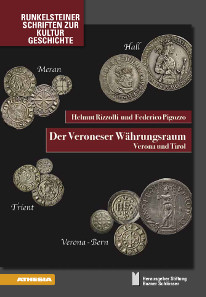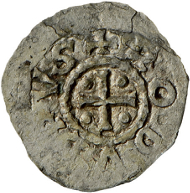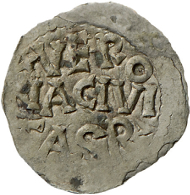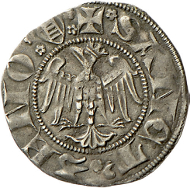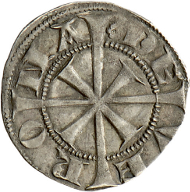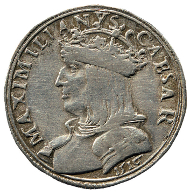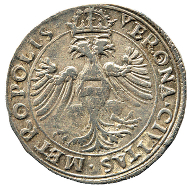by Ursula Kampmann
translated by Annika Backe
November 26, 2015 – The Swiss National Bank is not happy: In theory, 60 % of the Swiss monetary value is circulating in 1000 francs notes. In fact, however, these grands almost never show up. This paradox can only be explained with a gaze into the human psyche. If the homo oeconomicus is given the choice between different currencies, he is inclined to favor the one with the most stable value, if he intends to hoard the money, and the most commonly accepted one, if he intends to use it for payments.
Helmut Rizzolli, Federico Pigozzo, Der Veroneser Währungsraum. Verona und Tirol vom Beginn des 10. Jahrhunderts bis 1516 und Corpus Nummorum Veronensium (CNV), Corpus Nummorum Tirolensium Mediaevalium (CNTM), Runkelsteiner Schriften zur Kulturgeschichte Bd. 8. Bozen, Athesia, 2015. 729 p., color illustrations throughout. Hardcover. 17.1 x 24.5 cm. ISBN: 978-88-6839-139-3. 69,00.
Guide to the monetary history of the Veronese currency area
Why this Switzerland-heavy introduction? Well, the reason is simple: The mentioned behaviour is not a recent invention. What the people in Northern Italy and the Alpine region favored in those times when they were given a say as to which currency should be used in commerce is explained in the comprehensive corpus on the Veronese currency area written by Helmut Rizzolli and Federico Pigozzo. Taking this in-depth handbook in hand is a real pleasure. It not only contains a meaningfully designed catalog of the medieval coinage of Verona and Tyrol. More than half of the opus is devoted to an easy-to-read monetary history of the Veronese currency area. It leaves nothing to be desired. Written in a clear and lucid style, providing excellent illustrations and a sharp analysis, this text demonstrates what numismatics and the research of archival records can ultimately lead to: a reconstruction of the monetary history which did not stop, not even in the Middle Ages, at the city walls but connected geographical areas.
The oldest Vereonese coin with a firmly established date: Struck under Rudolph of Upper Burgundy (923-926), this denarius states Verona as its place of minting. Rizzolli-Pigozzo fig. 2.
Internationally accepted change
Let us begin with the monetary history, therefore, spanning about 360 book pages. Firstly, the reader is introduced to the Verona Mint. In two chapters of substance, the authors follow the “Veronese coin” from its beginnings to the supra-regional distribution of the Veronese denarii. Those coins served an extremely important purpose in medieval economy. With their comparatively low weight, they constituted the currency of choice when smaller sums of money had to be paid.
North Italian denarii found in a Hungarian tomb from the 10th century. The holes prove that the coins served as decoration of a horse’s bridles. Rizzolli-Pigozzo fig. 11.
Late in the 10th century, the coins not only circulated in the Veronese currency area but made their way as far north as Poland and Sweden. According to the account of a Spanish traveler visiting the market place of Prague in 966, ten chickens or enough oats to feed a riding horse for forty days could be purchased with a denarius in the full weight. Anyone planning on just roasting a chicken and not carrying a great deal of oats rather resorted to the Veronese denarius since this coin was lighter and hence more comfortable to use in every-day life.
Since 1311, the meinhardzwanziger were imitated even in Verona to which the ladder, the coat of arms of the Scaliger, above the beak of the eagle points. Rizzolli-Pigozzo fig. 48.
The Veronese denarii are imitated
Early in the 12th century, the bishops of Trent began with the imitation of this minor issue. Others followed and it was soon discovered that, when going to the market, not only small change in the form of imitated Veronese denarii were required but also their multiples to balance larger sums. The adlergroschen from Merano proved to be the most successful coins, which were then also imitated on a supra-national level, even in Verona. Chapters 3 and 4 deal with this phenomenon.
Minted in Verona, this testone with the portrait of Maximilian I has a value of 20 kreuzer. Rizzolli-Pigozzo fig. 128.
From the Carolingians to the Habsburgs
At this point, we can’t and won’t summarize what the book of Rizzolli and Pigozzo tells in a much more interesting way and in much greater detail. Their account covers the beginning of the Veronese mint after 889 until the decommissioning of the Verona Mint under Maximilian I in chapter 7, accessing archival records, literary sources and figural representations (the adoration of Mr Pfennig is unbeatable!), coin hoards, archaeological finds and – of course – the images on coins.
On the basis of this variety of sources a lively picture emerges which is an ongoing pleasure to read thanks to the humor with which the authors have seasoned their narrative. Far and away the best – to mention only one telling example – is the story about the she-goat that stood on top of the coins of the Prösels coin find one morning. Her owners firmly believed this “curious” animal, as a kind of gold-ass in the guise of a goat, had produced the coins all by itself.
Type corpus of coinages from Verona and Tyrol
As if the monetary history were not enough, the authors provide two exhaustive type corpora in addition. The first corpus deals with the coins minted in Verona, ranging in date from the time of Rudolph II of Burgundy (923-926) and Maximilian I (1509-1516). 56 coin types are itemized and illustrated with photographs. In case the relevant photograph is not enough to distinguish one type from the other, an additional drawing is provided or the relevant lettering is retraced in the photograph. It is clear to see that the catalog was prepared by pragmatists whose classification book comes in right where problems may arise.
The second corpus is nothing less than a Corpus Nummorum Tirolensium Mediaevalium that is based on two ground-breaking works of Helmut Rizzolli, published in 1991 and 2006 (which are out of stock, needless to add). All newly discovered coin types and variants had been carefully added by Armin Torggler. This part includes the coinages of the bishops of Trent, the dukes of Tyrol-Görtz and the Habsburgs from the Merano Mint, as well as imitations of coins from Merano. Coins following the Venetian standard from Lienz and Toblach conclude the corpus.
A comprehensive bibliography, an index of sites of coin finds and the biographies of all persons included round out the monumental opus. It also programmatically includes the vita of late Ottorino Murari, the coin collector who had died in 1991. A renowned expert in the history of Veronese currency, he combined his academic interest with his passion for collecting and thus greatly contributed to the studies on the Veronese monetary history.
The two authors Helmut Rizzolli and Federico Pigozzo devoting their work to Ottorino Murari bears testimony to their collector-friendly attitude. But this is not the only aspect that reflects the respect the authors foster towards the lay-man. Their book is devoid of any technical jargon. In a down-to-earth manner, they reconstruct the monetary history of the Veronese currency area to the effect that everybody can follow them.
Do you need a recommendation? It is rather simple: Don’t just buy it, read it!
The easiest way to get a copy of the book is by ordering it at Amazon.
Of course, it may also be purchased directly from the publisher, Athesia Verlag.




